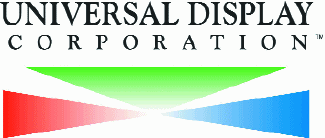2007 Business Conference to Explore Meteoric Growth of Display Business
The key to profitability in every display sector, including LCDs, PDPs, and OLEDs, will be examined at the latest incarnation of the annual two-day SID Business Conference.
by Michael Morgenthal
BY ALMOST EVERY ACCOUNT, the global display industry will exceed $100 billion in sales in 2007. As exciting as this growth has been to display professionals and consumers alike, it also has ushered in an era of complexity and volatility in the display business. One example is the fluctuation in panel prices for flat-panel TVs, specifically liquid-crystal-display (LCD) and plasma-display-panel (PDP) TVs. According to the latest data from market-research firm DisplaySearch, the LCD-panel market has begun to stabilize, while plasma-panel prices continue to fall rapidly.
What is driving these price fluctuations and what impact will they have on the overall display marketplace? These are just two of the many questions that will be examined in-depth at the fifth annual Society for Information Display (SID) Business Conference, which will be held May 21–22, 2007, as part of Display Week 2007: The SID International Symposium, Seminar & Exhibitionto be held at the Long Beach Convention Center in Long Beach, California, U.S.A.
This year's Business Conference includes a dynamic, all-new program that will focus on the current and future opportunities, challenges, and solutions in the display industry. The main component of the Business Conference will be enlightening presentations by leading display executives from around the world, recruited for their expertise in various sectors of the business. These talks will dissect current market conditions, offer insights into how these circumstances have emerged, and offer informed opinions on where the display market is headed and how and why it will get there. The 2007 Business Conference also will be a vehicle for networking and interaction. Each session on both Monday and Tuesday will conclude with a lively panel discussion and Q&A featuring the speakers from that session. A cocktail reception will close Monday's afternoon session, providing an additional chance for networking. Tuesday's portion of the Business Conference will begin with the Display Week keynote addresses, followed by additional presentations, culminating in an Analysts/Bankers luncheon panel that will be run in tandem with the SID Investor's Conference.
When taken in total, the presentations at the 2007 Business Conference will give attendees a comprehensive look at the state of today's display market and a glimpse into how it will develop in the coming years.
The Big Picture
Both LCD- and PDP-TV shipments have soared, but who in the display supply chain is benefiting? In his talk, "Global Markets in FPDs: How Large Will the Market Grow?" Ross Young, Founder and President of DisplaySearch, an NPD Group Company, will focus on the latest global and regional TV production as well as on future market conditions, paying particular attention to LCD vs. PDP competition. In addition, Young will discuss the technology and cost-reduction roadmaps for both LCDs and PDPs, current and future costs, prices, and channel margins, and high-definition (HD) household penetration.
During this decade-plus of explosive growth of the display industry, one of the main focal points has been the large-sized FPDs, particularly large LCD and PDP HDTVs. In his talk, "Analysis of Cost Competitiveness of Large FPD TV and Full-HD TV Prospects,"Peter Kwon, CEO, Display Bank, will offer a comparison of cost competitiveness of LCD TVs and PDP TVs that are larger than 40 in. on the diagonal and forecast the cost trend for these large FPD TVs. He will offer a detailed analysis of the advantages enjoyed by the TFT-LCD and PDP manufacturers and delve into how the increased demand for full HDTV in North America will influence the large-sized-TV market.
This last factor should not be underestimated. The continuing transition of American households from analog to digital TVs and from cathode-ray-tube (CRT) to flat-panel TVs will continue to drive the market for years. In his presentation, "Digital Home Media," Jim Sanduski, Vice President and General Manager of Digital TV Solutions, Business Personal Systems Group, Hewlett-Packard Co., will explore the U.S. market in depth, providing insight into the rapidly changing TV landscape. He will detail how the television will become a gateway to connecting to the Internet and to consumers' rapidly expanding collection of digital photos, videos, and music stored on PCs and other digital devices within the home, and what impact this will have on the TV market.
Michael Morgenthal is Managing Editor of Information Display
magazine; e-mail: mmorgenthal@pcm411.com
LCD Perspective
LCDs own the largest percentage of market share for FPD sales, and two talks will focus specifically on the LCD markets. In "Cost Reduction Issues Facing the LCD Industry," Jun Souk, Executive Vice President, Samsung Electronics, LCD Business Unit, will detail how the industry is suffering from profit erosion despite increasing revenues. He will examine the LCD industry's cost reduction effort in order to regain the profit share and to survive the growing pressure from cost reduction.

Souk told Information Display that profit erosion in the LCD market was due directly to price reductions on LCD TVs. First, an oversupply in the LCD market caused prices to drop more rapidly than costs, meaning that profits were slashed. This was accentuated by severe promotional price discounts on LCD TVs by U.S. retailers such as Best Buy and Circuit City. In addition, with five major LCD manufacturers all trying to increase market share, prices continued to be cut, and the increase in sales volume could not compensate for this, causing profits to decline even more.
"TV, unlike IT product, is a typical consumer product, and the general trend in consumer markets is that price is always going to be in a down pattern," Souk said.
In his talk, Souk will explain what the major LCD manufacturers are doing to overcome this, including intensive cost-reduction efforts in process and product design; simplification of the manufacturing processes, including reducing the number of components in LCD TVs such as drivers, ICs, and optical films; and applying innovative processes in manufacturing such as direct ink-jet printing of color filters substituting expensive photo-lithographic printing.
While profits may be shrinking, the size of LCD TVs continues to grow, thanks in part to continuing advances in substrate technology. In "Glass Challenges for the Future," Peter L. Bocko, Vice President, Display Futures, Corning Incorporated, will discuss in his presentation the four key themes that have characterized the history of active-matrix LCD substrates and are expected to extend into the future fueled by continued evolution of the LCD-TV platform and emerging portable applications. First, the substrate-size innovations that have created capability for large-sized panels and are changing the TV landscape will extend to the practical 3-m limit. The invention of high-value alumino-silicates, culminating in EAGLE XG™ for AMLCD TV, can be further expanded in innovative compositions optimized for the polysilicon and OLED platform. Capacity expansions will continue to deliver reliable supply, aligned and paced with regional demand. Corning is sponsoring the Monday luncheon at the Business Conference.

Emerging technologies will also receive a substantial amount of coverage at the Business Conference. One particular area of interest is organic-light-emitting-diode (OLED) displays. In his talk, "OLEDs: A Broad Perspective on their Market Potential," Steve Abramson, President, Universal Display Corp., will explore the challenges and hurdles that must be overcome in order for OLEDs to become a mainstream product. The material science and manufacturing issues as well as the ultimate industrial landscape will be discussed.

One area where OLED displays already have had some impact is in mobile displays, but according to James Cathey, Vice President of Business Development, QUALCOMM MEMS Technologies, Inc., current display technologies are not sufficient to support the needs of next-generation mobile devices, which are becoming tools not only for voice communications, but also the most personal devices for entertainment, computing, and information access. In his talk, "A Revolution in Display Technology: Enabling Next-Generation Wireless Communications," Cathey will explain how displays must evolve to be visible in a wider range of lighting conditions while using significantly less power as consumers continue to actively use mobile devices for more hours per charge and for more graphically compelling applications.
Several other presentations on topics of vital importance to the display business are still in development, including an examination of the impact of light-emitting-diode (LED) backlighting on FPDs, how to be a successful infrastructure provider to FPD manufacturers, and regulatory issues and product solutions facing HDTV receiver manufacturers.
For more information on the Business Conference, including a look at the complete program, visit www.sid2007.org. •